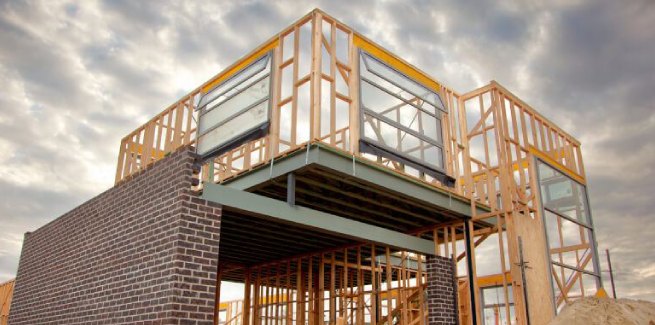According to the Australian Bureau of Statistics’ Building Approvals data for October 2020, total dwelling approvals rose 3.8 per cent in October (seasonally adjusted terms), following a strong 16.2 per cent rise in September.
This rise was driven by substantial increases in NSW (32.1 per cent) and Western Australia (29.7 per cent).
However, declines were recorded in Victoria (15.0 per cent), Tasmania (3.4 per cent), South Australia (2.4 per cent) and Queensland (0.8 per cent).
Private sector dwellings excluding houses rose 6.2 per cent in October to a total of 5,529 dwellings, but has remained 10.6 per cent lower than at the same time last year, while private sector houses rose 3.1 per cent in seasonally adjusted terms in October to a total of 10,692 approved private sector houses.
ABS director of construction statistics Daniel Rossi said all building types recorded increases in October.
“The continued strong demand for detached housing follows the relaxation of COVID-19 restrictions in most states and territories,” Mr Rossi said.
“Record-low interest rates and a range of federal and state-based incentives are also providing support for the housing sector.”
Across the states, approvals for private houses rose in Western Australia (37.5 per cent), Queensland (9.4 per cent) and South Australia (5.0 per cent) but both Victoria (6.9 per cent) and NSW (4.2 per cent) recorded falls.
The value of total building approved rose 26.1 per cent over October to $10.9 billion in seasonally adjusted terms.
The value of total residential building rose 9.4 per cent to $6.2 billion in October, which was driven by an increase in the value of new residential building by 11.5 per cent to $5.5 billion.
However, the value of residential renovations fell by 3.3 per cent to $775.3 million, but the value of renovations has remained at near four-year highs.
The seasonally adjusted estimated value of non-residential building rose by 58.6 per cent in October to $4.6 billion.
The HomeBuilder effects
Commenting on the ABS data, Master Builders Australia CEO Denita Wawn noted that the number of building approvals for new homes jumped by 15.4 per cent in seasonally adjusted terms and attributed this to the federal government’s HomeBuilder scheme.
“Even prior to the start of the COVID-19 crisis, new home building activity in Australia had been in the advanced stages of downturn,” Ms Wawn said.
“The introduction of HomeBuilder has turned things around. Approvals for new detached houses are now 20.7 per cent up on this time last year.”
Ms Wawn added that the recovery in residential building would benefit the whole economy, noting that every $1 million in residential building activity would support nine jobs throughout the economy.
“The upturn generated by HomeBuilder is helping claw back some of the jobs lost as a result of the pandemic,” she said.
The HomeBuilder scheme was recently extended by the federal government in a modified form to 31 March 2021.
The original program, which offers grants of $25,000 to owner-occupiers “substantially renovating” or building a new home, is available for contracts signed up to 31 December 2020. After that day, the extended program will apply.
This will provide a $15,000 grant for building contracts (new builds and substantial renovations) signed between 1 January 2021 and 31 March 2021, inclusive.
“Extending HomeBuilder until the end of 2021 will maximise the benefits of the scheme. It will mean the renewed momentum in the housing market to reach its full potential over the course of next year and provide even more benefits to our whole economy in terms of restoring employment.”
Assistant Treasurer Michael Sukkar also acknowledged the building approvals data from the ABS, and noted that the government extended the HomeBuilder scheme to “maintain this momentum”.
“The construction industry has said the extension of HomeBuilder will mean a steady pipeline of construction activity through to 2022, which will keep tradies on the tools,” Mr Sukkar said.
He added that the HomeBuilder scheme extension has built on the extension of the First Home Loan Deposit Scheme (FHLDS), under which an additional 10,000 guaranteed loans were made available to allow first home buyers to secure a loan to build a new home or purchase a newly built home with a deposit of as little as 5 per cent.
Housing Industry Association economist Angela Lillicrap also acknowledged the role of the HomeBuilder scheme in bumping up the building approvals numbers, but she noted a “divergence” between conditions facing detached house builders and apartment builders.
“Multi-unit approvals remain 12.5 per cent lower than the same time last year,” Ms Lillicrap said.
“The small number of multi-unit projects that gained approval in October are likely to have commenced the planning and building approval process years ago. These are not a good indicator of prospective commencements in this part of the market.
“Slower population growth, particularly in Sydney and Melbourne, and an increased preference for detached houses, will likely see demand for apartments constrained going into 2021.”
[Related: Residential work done dips to six-year low]
 ;
;
